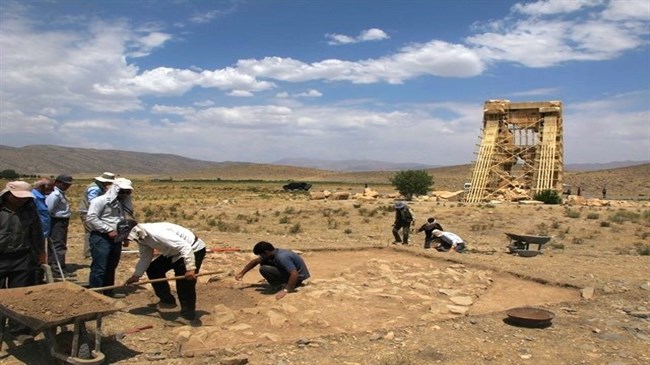Archeologists after new discoveries from Sassanid Empire at Gorgan Wall
Archeologists after new discoveries from Sassanid Empire at Gorgan Wall
 |
Archaeologists reconstruct the settlement pattern in Castle 2 and thus add another sheet to their knowledge of the Sassanid Empire within the districts of Gorgan Wall.
The Research Institute of the Iranian Cultural Heritage, Crafts and Tourism Organization quoted the head of the joint Iran-Britain team, responsible for the eighth excavation season at Gorgan Wall, Hamid Omrani-Rakavandi, that the excavations aimed at the type of building materials Identify Used in Castle 2 and create its geophysical map.
The archaeologist further said that the main objectives of the team this season were to discover a way to the living room, closet, cooking area, the holes dug in the room for food remnants and the craftsmanship of the inhabitants of the castle And other instruments and instruments that make changes in The next periods, chronological sampling and the determination of the duration of the construction of the castle and later settlements.
According to Omrani-Rakavandi, the eighth excavation phase, due to studies on castles in large and small towns on the southern side of the Gorgan Wall, cleans an illegal ditch of 4mx2m with a depth of six meters on the south-east side of the castle known as Bouraq Tappeh .
He said the measure was taken to define architectural layers and collect samples, including pieces of clayworks, animal bones, coal and other organic materials for laboratory and chronological studies.
The archaeologist pointed out that the excavation team also analyzed geomagnetic data, the aerial images of the castles of the Gorgan Wall, the ancient Gargaz Dam, a series of castles in the city in the southern side of the territory of the Gorgan Wall Survey of the landscape using satellite images to identify a number of extended city castles from prehistoric times to the Islamic period.
It also conducted studies on geological changes and progress of the Caspian sea water and its impact on Gorgan Wall in the western side of the territory.
According to him, the team intends to collect, classify, wash, and study the cultural history (clay work and animal bone).
In the eighth dig, the team of British archaeologists was headed by Wolfram Eberhard Sauer, a faculty member of the University of Edinburgh, Scotland.
